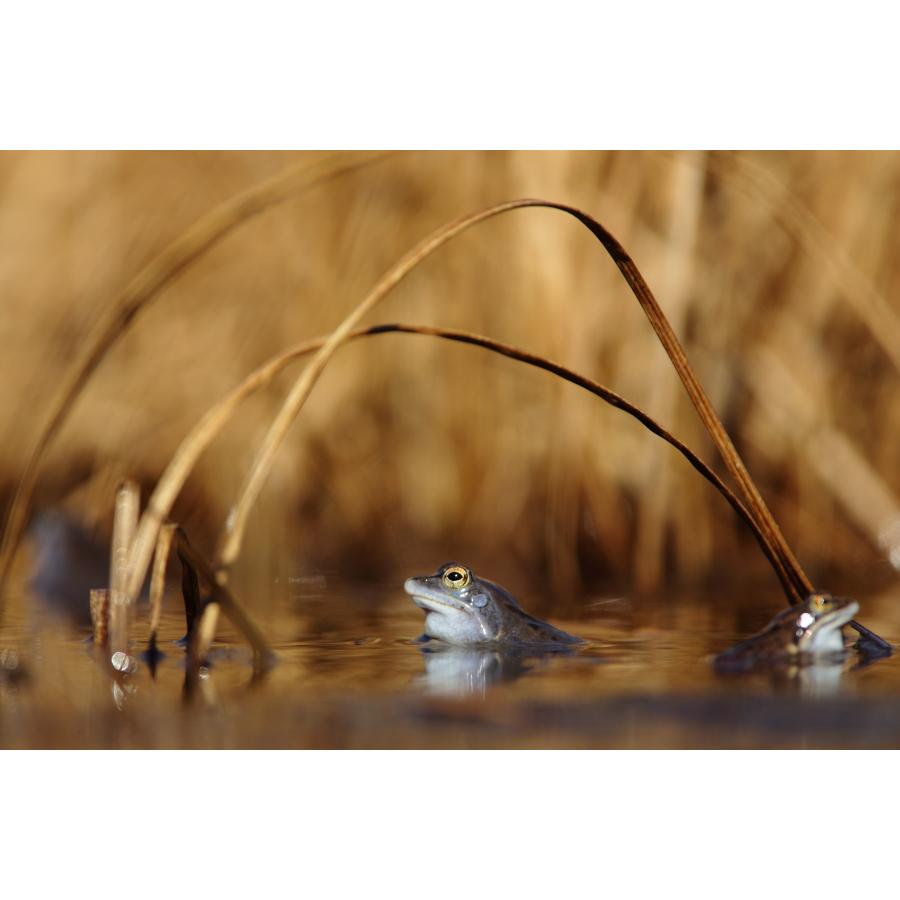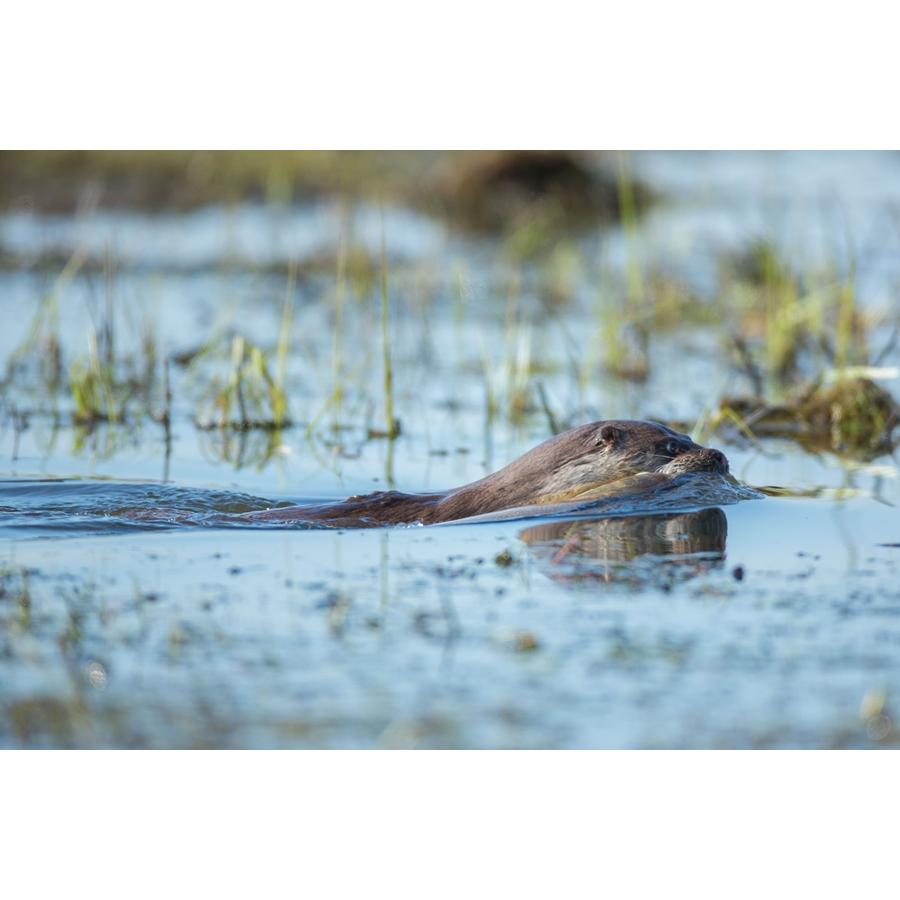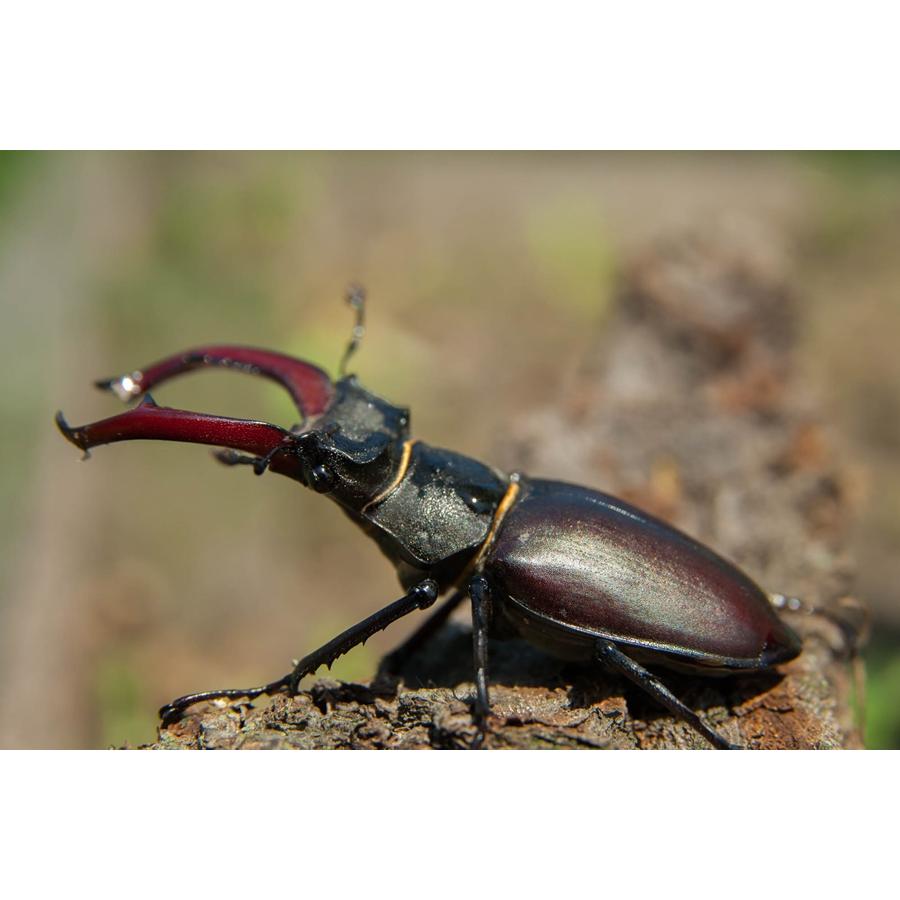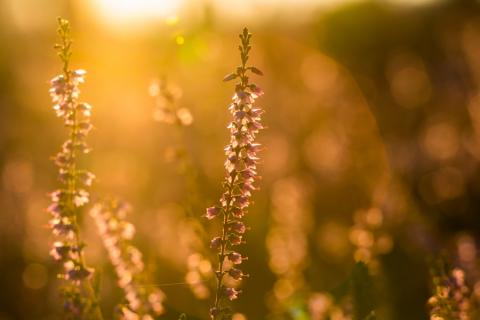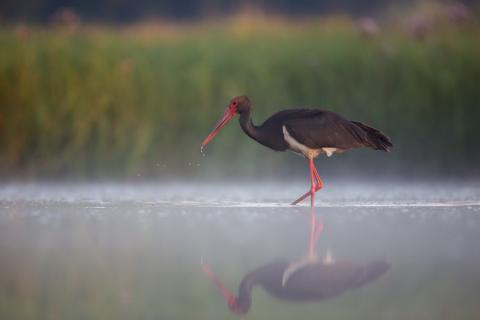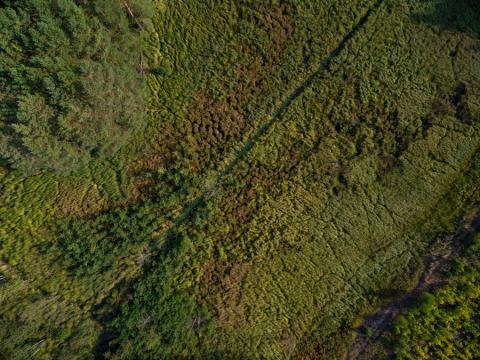The following invertebrates are under strict protection within the Forest District:
Great Capricorn beetle (Cerambyx cerdo) entered into the Polish Red Book of Animals, dusky large blue (Maculinea nausithous), also included in the Red Book, large white-faced darter (Leucorrhinia pectoralis). Moreover, there are 7 species of insects under partial protection: caterpillar hunter (Calosoma inquisitor), forest caterpillar hunter (Calosoma sycophanta), ground beetles (Carabus sp.), knapweed carder bee (Bombus silvarum), wood ant (Formica polyctena), red wood ant (Formica rufa), and Burgundy snail (Helix pomatia).
Fish worth mentioning: European bitterling (Rhodeus sericeus amarus), European weather loach (Misgurnus fossilis) and Spined loach (Cobitis taenia). They are under partial protection.
World of amphibians consists of 14 species, including those under complete protection: great crested newt (Triturus cristatus), European common spadefoot (Pelobates fuscus), fire bellied toad (Bombina bombina), natterjack toad (Bufo calamita), green toad (Bufo viridis), tree frog (Hyla arborea), moor frog (Rana arvalis); and those under partial protection: newt (Triturus vulgaris), alpine newt (Triturus alpestris), common toad (Bufo bufo), edible frog (Rana esculenta), common frog (Rana temporaria), frog (Rana ridibunda), pool frog (Rana lessonae).
Reptiles are represented by the following species: the sand lizard (Lacerta agilis), viviparous lizard (Lacerta vivipara), slow worm (Anguis fragilis), grass snake (Natrix Natrix) and adder (Vipera berus). Both amphibians and all five species of reptiles are protected.
179 species of birds including 39 species in the Birds Directive NATURA 2000 network have been found within the Forest District, e.g. common kingfisher (Alcedo atthis), crane (Grus Grus), Kite (Milvus milvus), ortolan (Emberiza hortulana), bluethroat (Luscinia sveccia).
Mammals are 44 species, including the protected: greater mouse-eared bat (Myotis myotis), Barbastelle (barbastellus) - two species of bats, and commonly known beaver (Castor fiber) and otter (Lutra Lutra).
Podobne artykuły
Najnowsze artykuły
Aktualności
Blok kalendarz

Latest news
Contact us
Nadleśnictwo Sława Śląska
ul. Niewidziajły 1A
67-410 Sława
tel. +48 68 356 62 29
fax. +48 68 356 62 29

